Amphibian Skin
In this activity, the student will use a model to learn how the unique adaptations of amphibians allow for water to permeate through their skin and how that impacts their survival. This activity is available in both English and Spanish.

By completing this lesson, your students will be able to:
- Create a model of amphibian skin using eggs.
- Record observations in a notebook or journal.
- Explain how the skin of an amphibian makes it highly susceptible to pollution and toxins in water.
More About this Lesson Plan
Wildlife Science @ Home is a collection of wildlife-related science experiments that can be carried out at home (or anywhere) using common household materials. The activities are appropriate for students of all ages. They address Science and Engineering Practices and Crosscutting Concepts that can be applied across all grade levels. However, content for individual activities will better address standards at specific grade levels. These activities are available in both English and Spanish.
In this activity, the student will use a model to learn how the unique adaptations of amphibians allow for water to permeate through their skin. The student will evaluate the benefits and problems that this adaptation provides to the animals and how it might explain some of the amphibian population decline we are witnessing around the world.
Standards Correlation
This lesson has been correlated to the following Arizona Department of Education academic standards:
Education through AZGFD
See resources for teachers, including lesson plans. Learn about hunter education, and classes to earn bonus points.
teacher resources
The goal of the AZGFD education program is to promote awareness, appreciation and stewardship of the state’s wildlife resources by using wildlife as a context for learning.
hunter education for bonus points
Classroom and online instruction, and field days for hunter education. Online “Ethically Hunting Arizona” class allows hunters to earn a lifetime bonus point.
